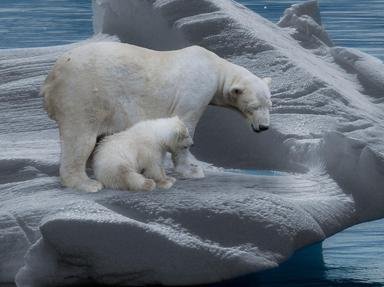Quiz Answer Key and Fun Facts
1. What is the only native flying insect to inhabit the Antarctic mainland?
2. What animal attacked and killed a British scientist in Antarctica?
3. What is the largest entirely terrestrial animal in Antarctica?
4. Which of the following are Antarctic arthropods that use a proboscis to suck the fluid out of their prey? One species has five pairs of legs rather than the customary four.
5. Which giant species breeds and raises its young in the middle of the Antarctic winter?
6. Which of the following breeds on the Antarctic mainland?
7. What is the easiest way to differentiate between krill-eating and fish-eating penquins?
8. Which of the following is an Antarctic penguin's natural enemy, also known as the raptor of the south because it preys on fledglings and eggs?
9. How do penguins move most efficiently in smooth snow?
10. What is the main food source of the misnamed crabeater seal, since crabs and lobsters are not found in Antartica?
11. Which unique feature differentiates all the sheathbill species from the rest of Antarctica's marine birds?
12. Which bird has the largest wingspan?
13. What was a significant contributing factor for the increase in the number of krill during the early 1900's that led to a boom in certain penguin and seal populations?
14. Besides the killer whale (orca), what is the only other toothed whale found in the Antarctic Ocean?
15. Which animal population consumes the largest amount of krill?
16. What bioluminescent crustacean that is an essential part of the Antarctic food chain is being studied for its ability to significantly reduce atmospheric carbon, thereby reducing global warming?
17. Which of the following features, inherent in most species of icefish (Notothenioidei), allow them to survive the below freezing temperature of the Antarctic Ocean?
18. Which mammal lives farther south than any other?
19. Which of the following is non-migratory and stays around Antarctica all year long?
20. Which large cephalopod makes up to 77% of the biomass of the Antarctic sperm whale's diet?
Source: Author
toughynutter
This quiz was reviewed by FunTrivia editor
crisw before going online.
Any errors found in FunTrivia content are routinely corrected through our feedback system.


